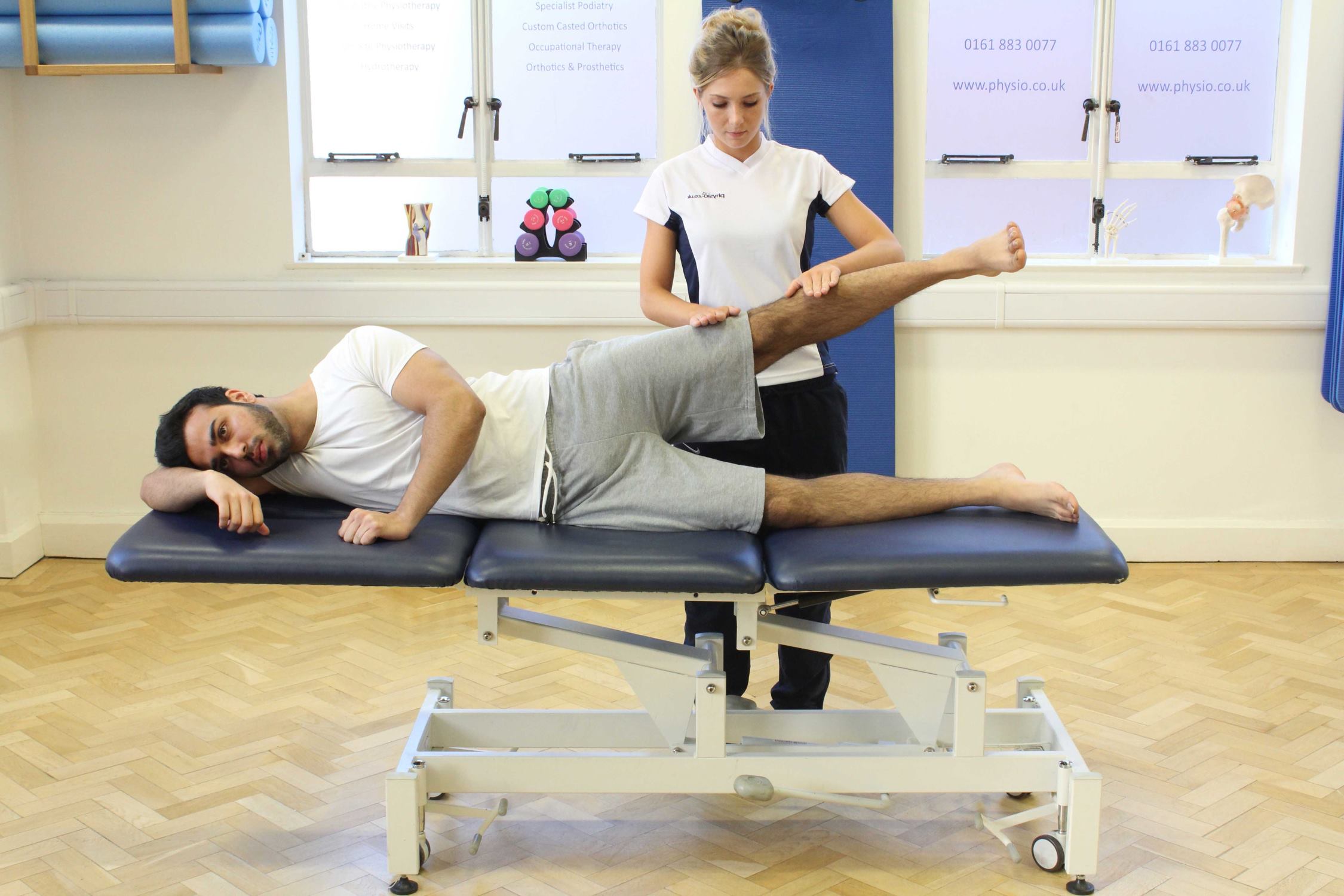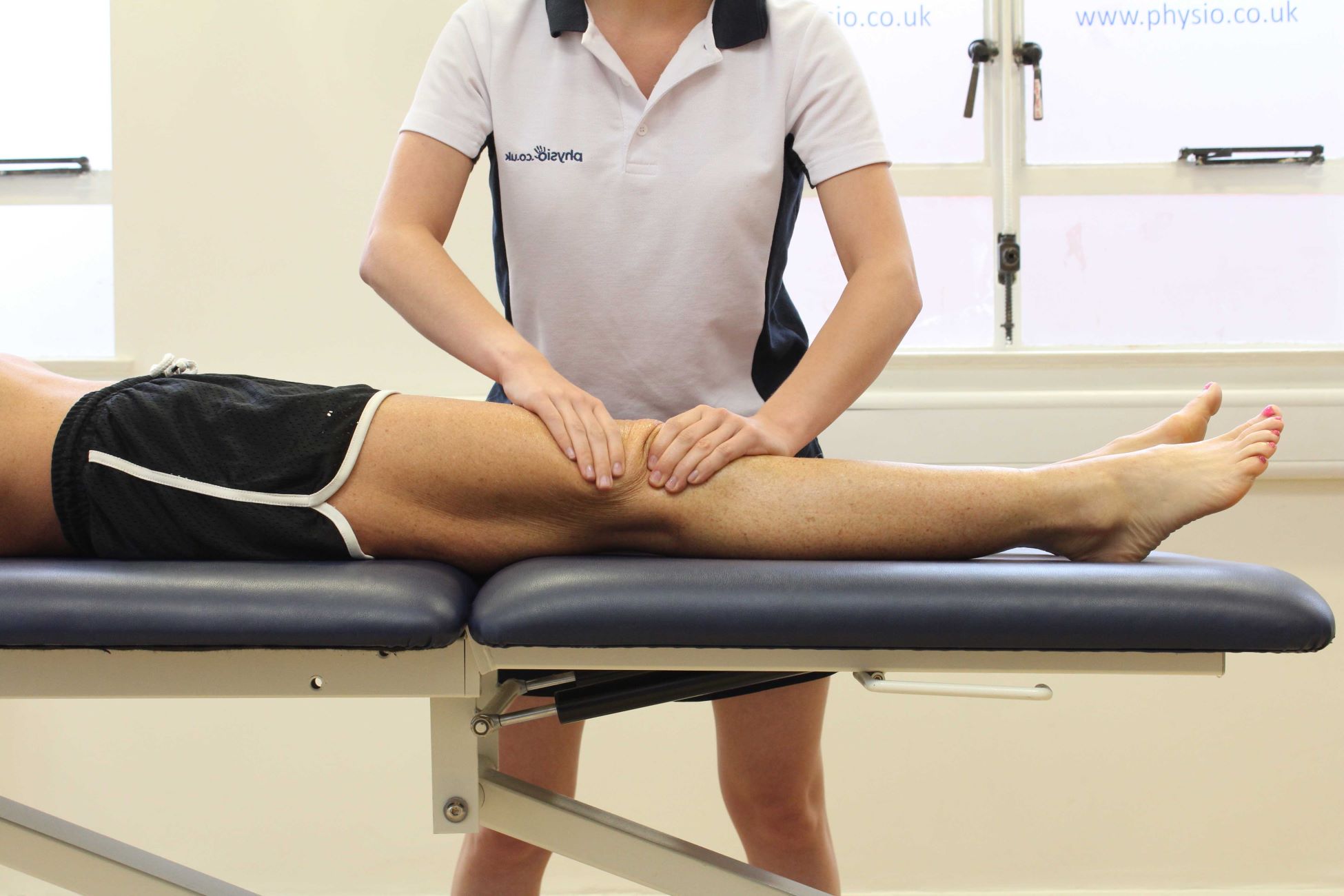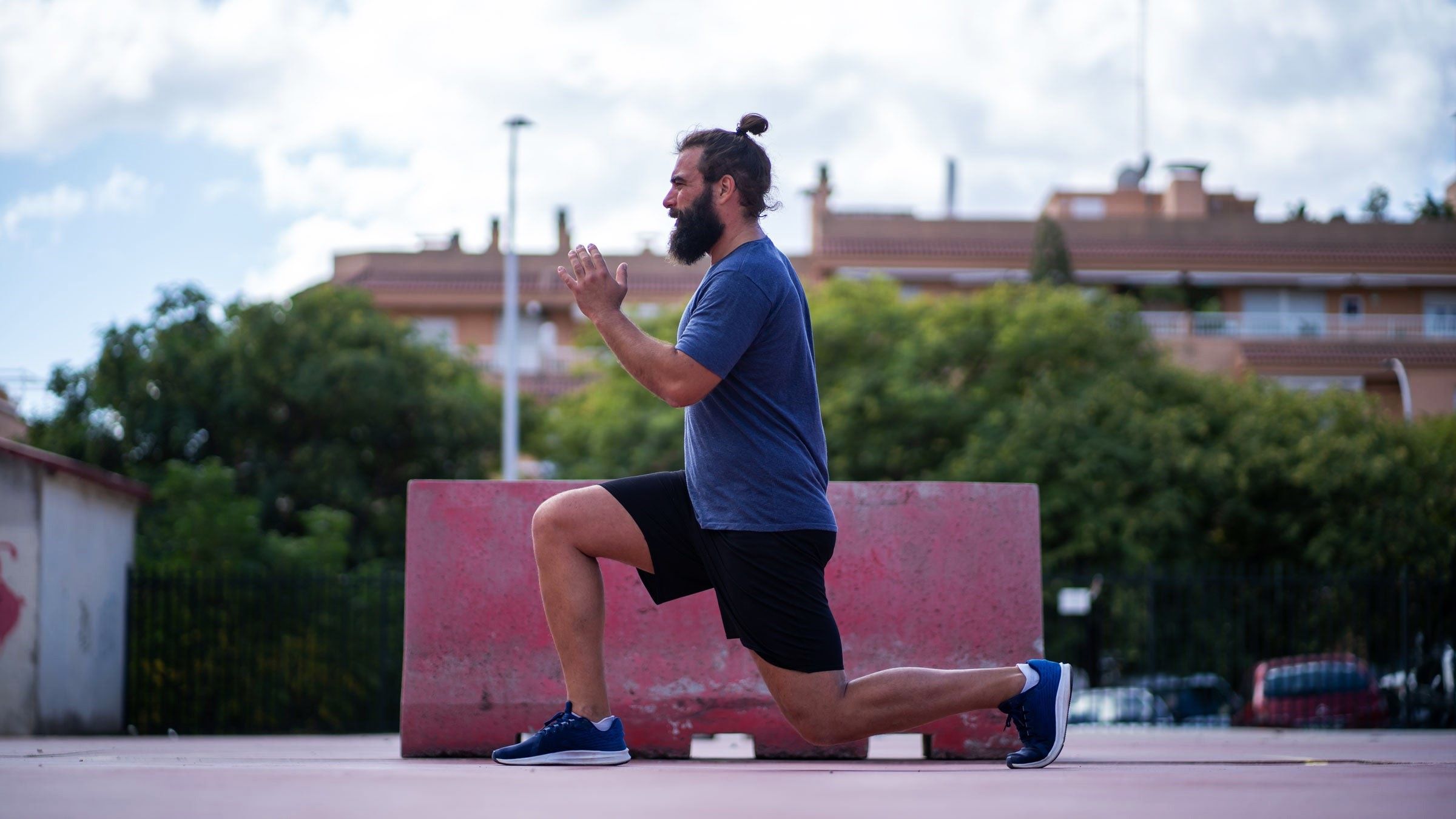Home>Health & Nutrition>Injury Prevention>Hip Impingement: A Comprehensive Guide For Runners


Injury Prevention
Hip Impingement: A Comprehensive Guide For Runners
Published: February 24, 2024
Learn how to prevent hip impingement and stay injury-free while running with this comprehensive guide for runners.
(Many of the links in this article redirect to a specific reviewed product. Your purchase of these products through affiliate links helps to generate commission for Therunningadvisor.com, at no extra cost. Learn more)
Table of Contents
Understanding Hip Impingement
Hip impingement, also known as femoroacetabular impingement (FAI), is a common condition that affects runners and athletes. It occurs when the ball and socket of the hip joint do not move smoothly, leading to friction and abnormal wearing of the joint. This can result in pain, limited range of motion, and potential damage to the hip joint over time.
There are three primary types of hip impingement: cam impingement, pincer impingement, and combined impingement. Cam impingement involves a misshapen femoral head, while pincer impingement occurs when the hip socket covers too much of the femoral head. Combined impingement involves a combination of both cam and pincer impingement.
Runners with hip impingement often experience discomfort and stiffness in the hip or groin area, especially during or after running. This can significantly impact their performance and overall enjoyment of the sport. Understanding the symptoms and causes of hip impingement is crucial for effective management and prevention.
By gaining insight into the underlying mechanisms of hip impingement, runners can take proactive measures to address the condition and minimize its impact on their running experience. Whether through targeted exercises, modifications to training routines, or seeking professional guidance, a comprehensive understanding of hip impingement empowers runners to make informed decisions for their well-being and athletic pursuits.
Symptoms of Hip Impingement in Runners
Runners with hip impingement may experience a range of symptoms that can significantly impact their performance and overall well-being. Recognizing these signs is crucial for early intervention and effective management of the condition. Here are the key symptoms to watch out for:
-
Hip or Groin Pain: One of the hallmark symptoms of hip impingement in runners is persistent pain in the hip or groin area. This discomfort often intensifies during or after running activities, and may manifest as a dull ache or sharp, stabbing pain. The pain may also radiate to the thigh or buttocks, affecting mobility and causing discomfort during daily activities.
-
Limited Range of Motion: Runners with hip impingement may notice a reduced range of motion in the affected hip joint. This can manifest as stiffness or a sensation of "catching" in the hip during movement. As a result, runners may experience difficulty with activities that require full hip extension or flexion, such as running, squatting, or climbing stairs.
-
Painful Clicking or Popping Sensation: Some individuals with hip impingement may experience audible or palpable clicking or popping sensations in the hip joint during movement. This can be accompanied by discomfort and may indicate abnormal friction within the joint, further contributing to pain and discomfort during running and other physical activities.
-
Difficulty Sitting for Prolonged Periods: Runners with hip impingement may find it uncomfortable to sit for extended periods, especially in positions that place pressure on the affected hip. This can impact daily activities and may contribute to a sense of unease or discomfort during prolonged periods of inactivity.
-
Radiating Pain: In some cases, the pain associated with hip impingement may radiate beyond the hip and groin area, affecting the lower back, buttocks, or even the knee. This can lead to a complex pattern of discomfort that extends beyond the immediate hip region, impacting overall mobility and physical function.
Recognizing these symptoms is essential for runners to seek appropriate medical evaluation and develop a tailored approach to managing hip impingement. By addressing these symptoms proactively, runners can work towards minimizing the impact of hip impingement on their running performance and overall quality of life.
Causes of Hip Impingement in Runners
Hip impingement in runners can stem from a variety of factors, often related to the biomechanics and repetitive stresses associated with running. Understanding the underlying causes of hip impingement is crucial for implementing targeted preventive measures and optimizing treatment strategies. Here are the primary factors contributing to hip impingement in runners:
-
Structural Abnormalities: Anatomical variations in the hip joint can predispose runners to impingement. Cam impingement, characterized by a misshapen femoral head, and pincer impingement, involving excessive coverage of the femoral head by the hip socket, are common structural abnormalities that can lead to impingement. These irregularities can result in abnormal contact between the hip bones during movement, leading to friction and potential damage to the joint.
-
Repetitive Motion: The repetitive nature of running can exacerbate hip impingement in runners. The constant flexion and extension of the hip joint during running activities can contribute to increased friction and wear within the joint, particularly in individuals with pre-existing structural abnormalities. Over time, this repetitive stress can exacerbate impingement symptoms and lead to discomfort during running and other physical activities.
-
Muscle Imbalances: Imbalances in the muscles surrounding the hip joint can impact its stability and function, potentially contributing to hip impingement. Weakness or tightness in the hip flexors, abductors, or external rotators can alter the mechanics of the hip joint, leading to abnormal movement patterns and increased susceptibility to impingement. Runners with muscle imbalances may experience altered gait mechanics, placing additional strain on the hip joint during each stride.
-
Poor Running Form: Inadequate running form, such as excessive hip internal rotation or inadequate hip extension, can contribute to hip impingement in runners. Suboptimal biomechanics during running can place undue stress on the hip joint, exacerbating impingement symptoms and increasing the risk of joint damage over time. Addressing running form through gait analysis and corrective exercises can play a pivotal role in mitigating impingement-related discomfort.
-
Training Errors: Overtraining, sudden increases in running intensity or volume, and inadequate recovery periods can contribute to hip impingement in runners. These training errors can lead to muscular fatigue, compromised joint stability, and altered movement patterns, all of which can predispose runners to hip impingement. Implementing structured training programs and allowing for adequate rest and recovery can help mitigate the risk of impingement-related issues.
By addressing these underlying causes, runners can take proactive steps to minimize the impact of hip impingement and optimize their running experience. Through targeted interventions, including strength training, flexibility exercises, and gait analysis, runners can work towards mitigating the factors contributing to hip impingement and promoting long-term joint health and performance.
Diagnosing Hip Impingement in Runners
Diagnosing hip impingement in runners involves a comprehensive assessment that encompasses medical history, physical examination, imaging studies, and, in some cases, diagnostic injections. Healthcare professionals, including orthopedic specialists and sports medicine physicians, employ a multifaceted approach to accurately diagnose hip impingement and develop tailored treatment plans for runners. The diagnostic process typically unfolds as follows:
Medical History
The initial step in diagnosing hip impingement involves a detailed review of the runner's medical history. This includes an exploration of past injuries, hip-related symptoms, and the individual's running habits and training routines. Understanding the onset and progression of symptoms, as well as any factors that exacerbate or alleviate discomfort, provides valuable insights into the nature of the hip impingement and its impact on the runner's athletic pursuits.
Physical Examination
A thorough physical examination is conducted to assess the runner's hip joint mobility, strength, and stability. Healthcare providers evaluate the range of motion in the hip joint, looking for signs of impingement-related restrictions or discomfort during specific movements. Additionally, muscle strength and flexibility around the hip are assessed to identify potential imbalances or weaknesses that may contribute to impingement symptoms.
Imaging Studies
Imaging studies, such as X-rays, magnetic resonance imaging (MRI), or computed tomography (CT) scans, are instrumental in visualizing the structural integrity of the hip joint and identifying any anatomical irregularities indicative of impingement. X-rays can reveal bony abnormalities, including cam or pincer morphology, while MRI and CT scans provide detailed insights into soft tissue structures and the overall condition of the joint.
Diagnostic Injections
In some cases, diagnostic injections, such as intra-articular hip joint injections, may be utilized to confirm the presence of impingement and differentiate it from other potential sources of hip pain. These injections involve the introduction of a local anesthetic and/or corticosteroid into the hip joint, providing temporary relief and helping to pinpoint the origin of the discomfort.
By integrating these diagnostic modalities, healthcare providers can establish a precise diagnosis of hip impingement in runners, guiding the development of targeted treatment strategies. The comprehensive nature of the diagnostic process enables healthcare professionals to tailor interventions to the specific needs of each runner, promoting effective management and optimized outcomes in addressing hip impingement and supporting a return to pain-free running.
Treatment Options for Hip Impingement in Runners
Addressing hip impingement in runners necessitates a multifaceted approach that encompasses both conservative interventions and, in some cases, surgical options. The goal of treatment is to alleviate symptoms, improve hip joint function, and facilitate a safe return to running activities. Here are the primary treatment options for hip impingement in runners:
Conservative Management
Physical Therapy and Rehabilitation
Physical therapy plays a pivotal role in the conservative management of hip impingement. Targeted exercises aim to improve hip joint mobility, strengthen supportive musculature, and address any underlying muscle imbalances contributing to impingement symptoms. Rehabilitation programs may include hip-strengthening exercises, flexibility drills, and gait retraining to optimize running mechanics and reduce stress on the hip joint.
Activity Modification
Temporarily modifying running activities can help alleviate symptoms and prevent further aggravation of hip impingement. This may involve reducing running volume, adjusting training intensity, or incorporating cross-training activities that minimize impact on the hip joint. By strategically modifying activity levels, runners can facilitate the healing process and gradually reintegrate running into their routine as symptoms improve.
Non-Steroidal Anti-Inflammatory Drugs (NSAIDs)
In some cases, healthcare providers may recommend the short-term use of NSAIDs to manage pain and inflammation associated with hip impingement. These medications can provide symptomatic relief, particularly during periods of heightened discomfort, and may complement other conservative interventions to support the runner's overall treatment plan.
Surgical Intervention
Arthroscopic Hip Surgery
For individuals with severe or persistent hip impingement symptoms that do not respond to conservative measures, arthroscopic hip surgery may be considered. This minimally invasive procedure involves addressing bony irregularities, repairing damaged soft tissues, and optimizing the overall structure of the hip joint to alleviate impingement-related issues. Arthroscopic surgery aims to restore normal hip joint function and facilitate a safe return to running activities.
Rehabilitation Post-Surgery
Following arthroscopic hip surgery, a structured rehabilitation program is essential for runners to regain strength, mobility, and functional stability in the hip joint. Physical therapy plays a crucial role in the post-surgical phase, guiding individuals through targeted exercises, progressive loading protocols, and gait retraining to support a successful return to running while minimizing the risk of re-injury.
By tailoring treatment options to the specific needs of each runner, healthcare providers can optimize outcomes and support a gradual return to pain-free running. Whether through conservative management or surgical intervention, addressing hip impingement empowers runners to pursue their athletic endeavors with confidence and resilience.
Preventing Hip Impingement in Runners
Preventing hip impingement in runners is a proactive endeavor that encompasses targeted strategies to minimize the risk of developing this debilitating condition. By integrating preventive measures into their training routines and overall approach to running, individuals can safeguard their hip joint health and optimize their long-term athletic performance. Here are key considerations for preventing hip impingement in runners:
Proper Warm-Up and Cool-Down
Prior to embarking on running activities, incorporating a comprehensive warm-up routine is essential for preparing the body for the demands of exercise. Dynamic stretches, mobility drills, and activation exercises can help prime the hip joint and surrounding musculature for optimal performance while reducing the risk of undue stress on the joint. Similarly, a thorough cool-down routine, including static stretching and foam rolling, can aid in promoting flexibility and mitigating post-run muscle tightness, contributing to overall joint health.
Read more: A Comprehensive Guide To Running Nutrition
Cross-Training and Strength Training
Integrating cross-training activities, such as swimming, cycling, or low-impact aerobics, into the training regimen can provide valuable opportunities for cardiovascular conditioning while minimizing the repetitive stresses placed on the hip joint during running. Additionally, incorporating targeted strength training exercises that focus on the hip abductors, flexors, and external rotators can enhance muscular stability and support optimal hip joint function, reducing the likelihood of imbalances that may predispose runners to impingement.
Gradual Progression and Recovery
Adopting a gradual approach to training progression, including incremental increases in running volume and intensity, allows the body to adapt to the demands of running while minimizing the risk of overuse injuries, including hip impingement. Adequate rest and recovery periods between training sessions are equally crucial for allowing the hip joint and supporting musculature to recuperate, reducing the cumulative impact of repetitive stress and promoting overall joint resilience.
Gait Analysis and Running Form
Undergoing gait analysis by a qualified professional can provide valuable insights into running mechanics and potential biomechanical inefficiencies that may contribute to hip impingement. Addressing running form through targeted interventions, such as gait retraining and corrective exercises, can optimize hip joint alignment and reduce the risk of abnormal stresses on the joint during each stride, promoting a more efficient and joint-friendly running technique.
Regular Monitoring and Professional Guidance
Regular monitoring of hip joint health, including paying attention to any early signs of discomfort or limitations in range of motion, is essential for proactive intervention. Seeking professional guidance from a sports medicine physician, physical therapist, or certified running coach can provide valuable insights into optimizing training routines, addressing potential risk factors, and implementing targeted interventions to support hip joint health and prevent the onset of impingement.
By integrating these preventive measures into their running practices, individuals can take proactive steps to minimize the risk of hip impingement and promote long-term joint health. Empowered with a comprehensive understanding of preventive strategies, runners can pursue their passion for running with confidence, resilience, and a reduced risk of hip impingement-related issues.
Rehabilitation and Recovery for Runners with Hip Impingement
Rehabilitation and recovery play a pivotal role in the journey of runners seeking to overcome hip impingement and return to pain-free, unrestricted running. The process of rehabilitation is multifaceted, encompassing targeted exercises, progressive loading protocols, and comprehensive support to facilitate optimal recovery and long-term joint health.
Physical Therapy and Exercise Programs
Physical therapy serves as a cornerstone of rehabilitation for runners with hip impingement. Tailored exercise programs are designed to address muscle imbalances, improve hip joint mobility, and enhance overall functional stability. These programs often include a combination of strengthening exercises for the hip abductors, flexors, and external rotators, as well as flexibility drills to promote optimal range of motion in the hip joint. Additionally, targeted core strengthening exercises may be incorporated to enhance overall stability and support proper running mechanics.
Gait Retraining and Biomechanical Analysis
Gait retraining, guided by biomechanical analysis, is instrumental in optimizing running mechanics and reducing stress on the hip joint. By addressing potential inefficiencies in running form, such as excessive hip internal rotation or inadequate hip extension, runners can mitigate the risk of exacerbating impingement symptoms. Biomechanical analysis provides valuable insights into individual gait patterns, allowing for targeted interventions to promote a more efficient and joint-friendly running technique.
Gradual Return to Running
A gradual return to running is a key component of the rehabilitation process for runners with hip impingement. Structured progression, guided by healthcare professionals, allows individuals to reintegrate running activities in a controlled manner, minimizing the risk of re-injury and optimizing the adaptation of the hip joint to the demands of running. This gradual approach may involve a phased increase in running volume and intensity, coupled with ongoing monitoring of symptoms and joint response to activity.
Patient Education and Self-Management Strategies
Empowering runners with comprehensive education and self-management strategies is integral to the rehabilitation and recovery process. Understanding the factors contributing to hip impingement, as well as learning techniques for self-care, injury prevention, and symptom management, equips individuals with the knowledge and tools to actively participate in their recovery journey. This may include guidance on proper warm-up and cool-down routines, self-mobilization techniques, and strategies for modifying running activities to support ongoing joint health.
Psychological Support and Motivational Guidance
Rehabilitation and recovery from hip impingement can be a challenging and emotionally taxing experience for runners. Providing psychological support and motivational guidance is essential for fostering resilience and maintaining a positive outlook throughout the recovery process. Healthcare professionals and support networks play a crucial role in offering encouragement, addressing any psychological barriers to recovery, and promoting a mindset of perseverance and determination.
By embracing a comprehensive rehabilitation and recovery approach, runners with hip impingement can navigate their journey towards restored joint health and a return to the activities they love. Through targeted interventions, ongoing support, and a commitment to the rehabilitation process, individuals can emerge stronger, more resilient, and empowered to pursue their running aspirations with confidence and vitality.











